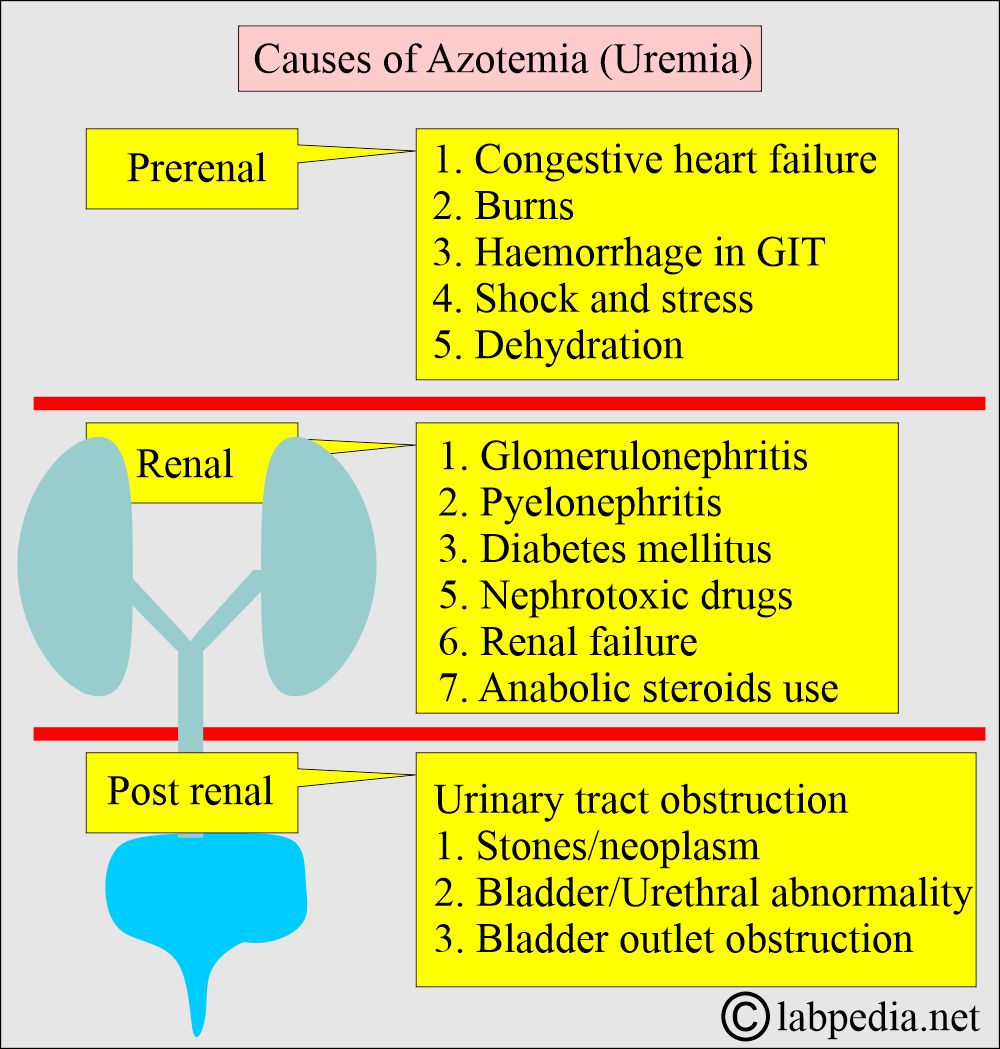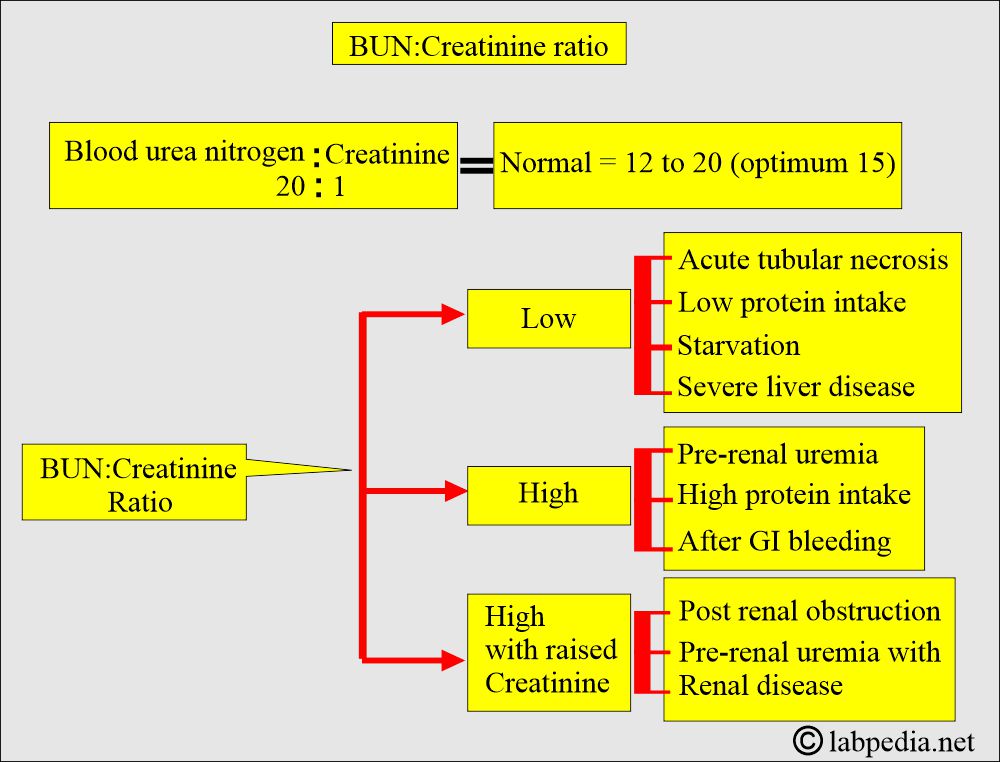Blood Urea Nitrogen (BUN)/Creatinine ratio, and Interpretations
Blood urea nitrogen (BUN)/Creatinine ratio
What sample is needed for the Blood urea nitrogen/creatinine ratio?
- Fresh serum of the patient is needed.
- Estimate serum BUN and Creatinine.
What are the indications for the blood urea nitrogen/creatinine ratio?
- To find the cause of azotemia or renal failure.
- It will differentiate prerenal and postrenal azotemia from renal azotemia.
- BUN/Creatinine ratio is a rough guide for renal disease.
How will you calculate the BUN/creatinine ratio?
What is the normal BUN/creatinine ratio?
- BUN/Creatinine ratio = 10 :1
- On normal diet = 12 to 16
- Optimum adult level = 15.5
How will you interpret the BUN/creatinine ratio?
- BUN/Creatinine ratio differentiates between acute and chronic renal disease.
- Prerenal azotemia appears with poor renal perfusion, such as hypovolemia and hypotension.
- A value greater than 15:1 is seen in dehydration and hypotension.
- Postrenal azotemia is due to obstruction.
- This value is <15:1.
Where will you find that the BUN/Creatinine ratio is maintained when BUN and creatinine levels are elevated?
- This is suggestive of renal diseases like:
- Intrarenal glomerulonephritis.
- Tubulointerstitial nephritis.
- This is referred to as renal azotemia.
What are the causes of a raised BUN/Creatinine ratio?
- Prerenal azotemia:
- There is poor renal perfusion, such as hypovolemia or hypotension.
- Postrenal azotemia:
- Seen in congestive heart failure.
- Urinary tract obstruction.
- Gastrointestinal bleeding.
- Trauma.
What are the causes of decreased BUN/Creatinine ratio?
- This is rare and seen in:
- Dietary protein deficiency
- Severe liver disease
- Prerenal acute failure = BUN/Creatinine ratio > 20 : 1
- Renal acute failure = BUN/Creatinine ratio < 20 : 1
- Suggest renal azotemia or late postrenal azotemia when BUN / Creatinine ratio = < 10:1
How will you differentiate acute prerenal and renal failure?
| Lab tests | Acute renal failure | Acute Prerenal Failure | Acute Postrenal Failure |
|
|
|
|
|
|
|
|
|
|
|
|
What are the causes of an increased (BUN/Creatinine) ratio >10:1 while creatinine is normal?
- Prerenal azotemia, where BUN rises without an increase in creatinine, is due to decreased GFR and is seen in:
- Heart failure.
- Dehydration.
- Blood loss.
- Salt depletion.
- GI tract hemorrhage.
- High protein intake.
- Certain drugs like tetracycline and glucosteroids.
What are the causes of an increased BUN/Creatinine ratio =>10:1 with a raised creatinine level?
- Postrenal azotemia, where BUN rises without any correlation to creatinine increase.
- Obstructive uropathy.
- Prerenal azotemia is superimposed on renal disease.
What are the causes of a decreased BUN/Creatinine ratio = <10:1 with decreased BUN value?
- Acute tubular necrosis.
- Starvation.
- Low-protein diet.
- Severe liver disease.
- Any etiology leading to a decrease in urea synthesis.
- Repeated dialysis.
- Pregnancy.
What are the causes of a decreased BUN/Creatinine ratio = <10:1 with increased creatinine level?
- Rhabdomyolysis (There is the release of muscle creatinine).
- Drugs like phenacemide therapy (Will increase the conversion of creatine to creatinine).
- Patients with a muscular body develop renal failure.
Questions and answers:
Question 1: What is the limit of increased BUN/Creatinine ratio??
Question 2: What is the BUN/Creatinine ratio in acute renal failure?


